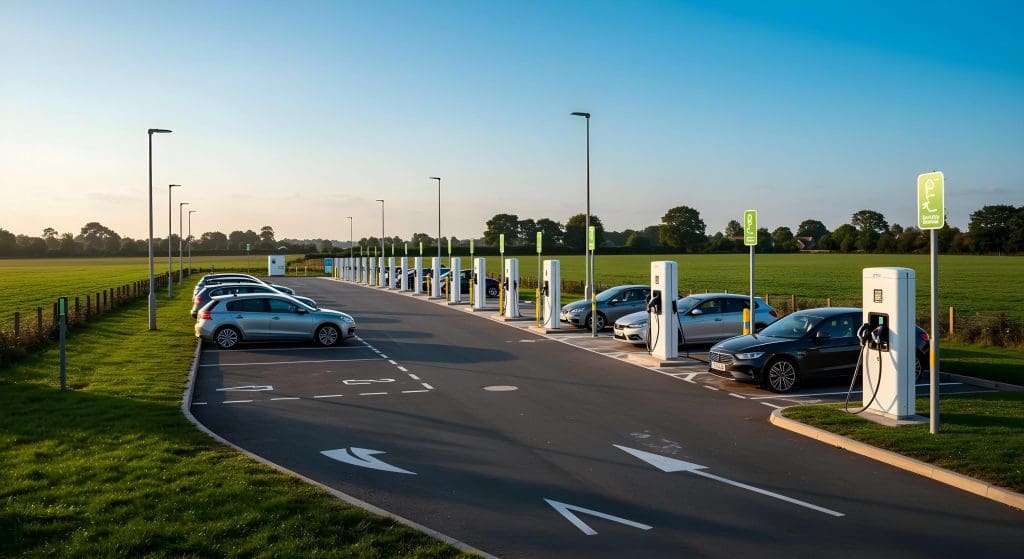Picture this: you’re cruising down the M1 in your shiny electric car, the battery’s at 12%, and your sat-nav’s screaming like a toddler in a supermarket. You need a charge—and fast. Enter rapid EV chargers: the white knights of the electric world. But are they worth the cost, or is there a smarter way to keep your car topped up?
What is Rapid EV Charging Anyway?
Rapid chargers are the big guns of the EV world. Rated at 50kW and above (ultra-rapid hitting 150kW to 350kW), they’re designed to get you back on the road in the time it takes to down a flat white and check your emails.
A rapid charger can typically deliver 80% battery in 30–60 minutes. Ultra-rapid? Think 20–30 minutes. Perfect for motorway journeys, company car drivers on tight schedules, and anyone allergic to waiting around.
The Price of Speed: Are You Paying Too Much?
Speed comes at a price. According to industry benchmarking, UK rapid chargers average 73p per kWh, while ultra-rapid can hit 85p–£1 per kWh. Compare that to home charging (typically 30p per kWh off-peak) and your wallet might wince.
- Home Charging (off-peak): ~30p per kWh
- Public Fast Charging (7kW–22kW): ~50p per kWh
- Rapid Charging (50kW+): ~73p per kWh
- Ultra-Rapid Charging (150kW+): ~85p–£1 per kWh
So, is it worth it? For long trips, absolutely. For daily commutes? Probably not. That’s where ONEEV comes in—helping you plan your charging stops and compare prices in real time.
Where to Find Rapid EV Chargers in the UK
You’ll spot rapid chargers at:
- InstaVolt locations across retail parks
- BP Pulse stations on major routes
- Osprey sites often paired with coffee shops
- Hotels like The Celtic Manor for guests and day-trippers
- Motorway service areas (MOTO, Welcome Break)
With over 16,000 rapid and ultra-rapid chargers nationwide, there’s likely one closer than you think.
Paying Safely at Rapid Chargers
Most rapid chargers accept contactless cards, apps, and RFID memberships. But a word of warning—watch out for dodgy QR codes and tampered card machines. Fraudsters have been known to stick fake QR codes on chargers to skim payment details.
To stay safe, use in-app payments via ONEEV or trusted provider apps. This ensures a secure transaction without relying on hardware that could be compromised.
Rapid vs Ultra-Rapid: Which Should You Use?
If you’re driving a Tesla Model Y, Kia EV6 or Hyundai IONIQ 5—cars with 800V architecture—ultra-rapid chargers make sense. For older EVs, a standard 50kW rapid charger will deliver all the speed your car can handle.
Remember: your car’s charging capability determines whether paying for 350kW speeds is even worth it.
The Verdict: Are They Worth It?
Rapid charging isn’t cheap, but it’s priceless when you’re in a pinch. For regular driving, home or workplace charging is still king. For road trips and busy company drivers, it’s the difference between arriving on time or hunting for a charger in the rain.
Find, compare, and pay for rapid charging the smart way with ONEEV. Download the app today and turn EV charging stress into a thing of the past.
